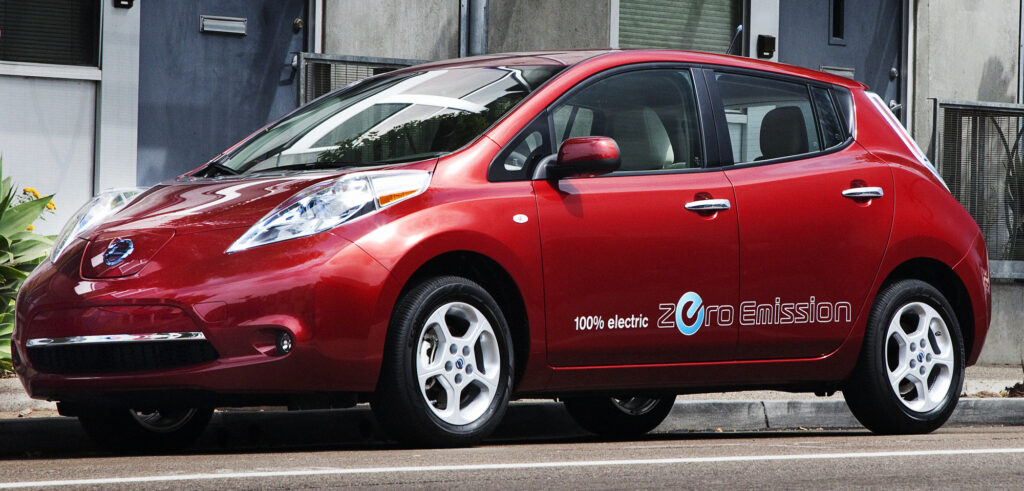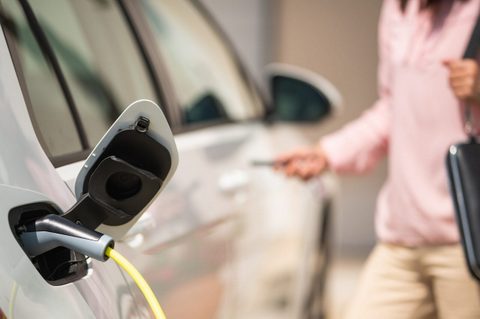It’s All About the Prep – Both You & the Car
Selling a used car is never easy, especially when you’ve owned the vehicle for many years. However, you can’t let your emotions cloud your judgment. Sellers can miss out on thousands of dollars if they’re not careful, especially now that electric vehicles are in high demand.
Here are five common mistakes to avoid when selling your EV.
1. Underestimating the Car’s Value
Independent sellers often don’t have a clear idea of their car’s value. This mistake is the most obvious, yet most common of all vehicle-selling errors. The first thing you should do is research their auto’s book value. This resource will provide a few prices, including the estimated private-party sale value.

Sellers should also browse car sales websites such as Autotrader, eBay Motors and Craigslist to find the prices of similar models. No two cars are the same, but you will get a good idea of your EV’s value by exploring the local marketplace.
2. Not Having a Pricing Strategy
An accurate estimate of your EV’s value is a good starting point, but you also need a pricing strategy. Sellers will have difficulty finding a reasonable buyer if they have an inflexible price range and refuse to negotiate.
Sellers also can’t afford to set prices too high or too low, as people often see that as a red flag. You will be disappointed if you’re trying to sell your EV to make a substantial profit. Developing a basic pricing strategy is crucial to attracting and negotiating with buyers.
3. Providing an Incomplete Description
You must provide a complete description to draw interest. Failure to include crucial details like the car’s repair history, the driving experience and adequate photographs will immediately turn away potential buyers. They might even report your online listing because they think you’re being dishonest.

Make sure you include every bit of relevant information in your listing. Wash your car and do a legitimate photo shoot to make it look as appealing as possible. Take pictures from multiple angles to show off the car’s best qualities, both inside and out. A professional-looking listing with helpful insights will attract much more attention than a low-effort ad with insufficient information.
4. Dismissing Serious Inquiries
A seller’s emotions often come into play when serious buyers start to make inquiries. Although people have a genuine interest in their car, they’re still mentally and emotionally unprepared to begin negotiating. It’s OK to have mixed feelings about selling your EV, but you can’t push people away and dismiss reasonable offers.
5. Making a Poor First Impression
Every private-party car sale should end with a meeting and test drive—the first chance for both groups to make a good personal impression. However, many sellers neglect to prepare their vehicles for the test drive, making the first meeting awkward and less likely to end in a sale.

If you manage to link up with a serious buyer, take the time to wash your car and organize a route for the test drive. You should also teach them about the best EV recharging habits and locations if it’s their first electric one. These efforts demonstrate that you’re selling the vehicle in good faith.
Sell Your EV with Confidence
Lacking confidence is the worst mistake of all. It will negatively impact your pricing strategy, negotiations with buyers and advertising efforts. You must channel your inner salesman and sell your EV with confidence to make a reasonable deal. A confident attitude and positive outlook will lead to serious buyers and a good return on your sale.
Story by Martin Banks. Photos from Clean Fleet Report archives, iStock and Unsplash.

Great post! I’m looking forward to reading more of your work.
order lasuna – diarex over the counter purchase himcolin pills
besifloxacin over the counter – buy sildamax without a prescription buy sildamax cheap
cheap neurontin – buy cheap sulfasalazine purchase sulfasalazine pills
order benemid 500mg online cheap – brand probalan tegretol uk
buy colospa 135 mg online cheap – generic pletal 100 mg pletal 100 mg us
celecoxib 100mg uk – purchase celebrex pill order indocin for sale
buy diclofenac pills for sale – buy voltaren pill aspirin generic
buy rumalaya generic – order generic rumalaya amitriptyline pill
buy generic pyridostigmine over the counter – imitrex without prescription buy imuran generic
how to get voveran without a prescription – imdur 20mg sale nimotop medication
order ozobax generic – order feldene 20mg piroxicam buy online
generic mobic 15mg – rizatriptan 5mg for sale ketorolac tablet
order cyproheptadine without prescription – periactin 4mg tablet buy zanaflex tablets
trihexyphenidyl online order – where can i order voltaren gel how to purchase voltaren gel
how to get cefdinir without a prescription – buy clindamycin order cleocin sale
deltasone 5mg canada – deltasone 10mg over the counter buy permethrin without a prescription
purchase acticin for sale – buy benzac no prescription retin generic
where can i buy metronidazole – order cenforce 100mg generic generic cenforce
buy betnovate online – buy generic differin over the counter purchase monobenzone online cheap
augmentin 375mg canada – order augmentin generic buy levothyroxine tablets
order cleocin 150mg – indocin 75mg over the counter indocin online buy
buy losartan online – keflex price keflex 125mg price
order crotamiton online cheap – aczone online aczone order online
zyban without prescription – buy shuddha guggulu tablets buy shuddha guggulu generic
buy modafinil 100mg generic – buy promethazine paypal order meloset 3 mg pills
order progesterone 200mg – order generic progesterone 200mg clomiphene usa
order xeloda 500mg for sale – how to buy ponstel buy danocrine 100 mg without prescription
シルデナフィルジェネリック йЂљиІ© – г‚·г‚ўгѓЄг‚№ гЃЉгЃ™гЃ™г‚Ѓ г‚·г‚ўгѓЄг‚№гЃ®йЈІгЃїж–№гЃЁеЉ№жћњ